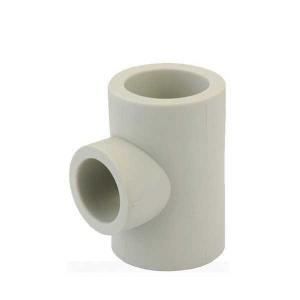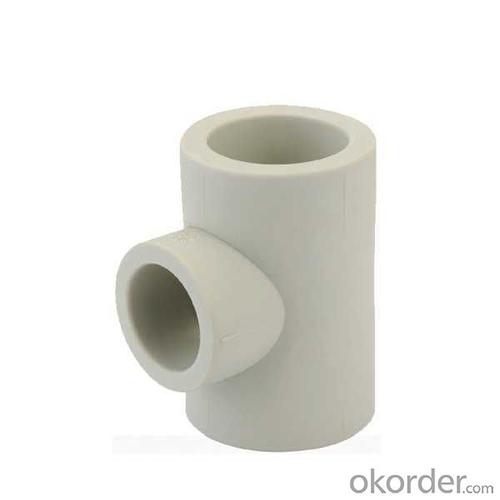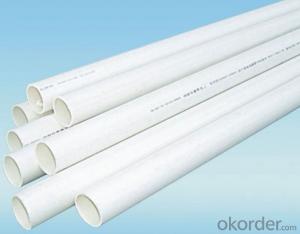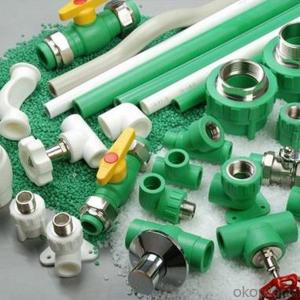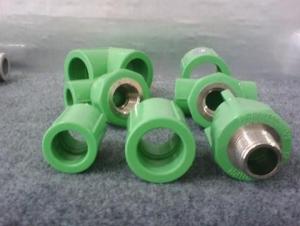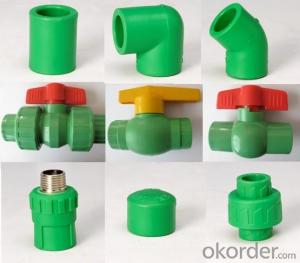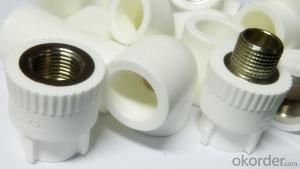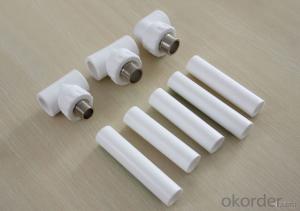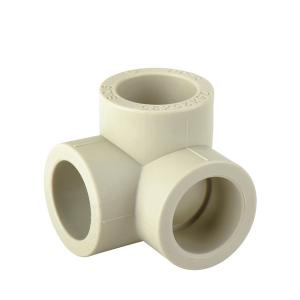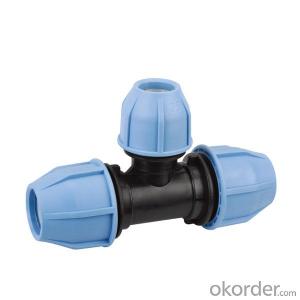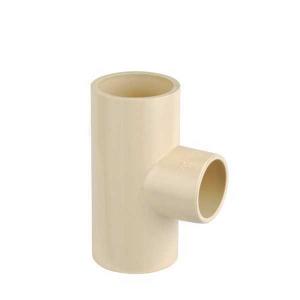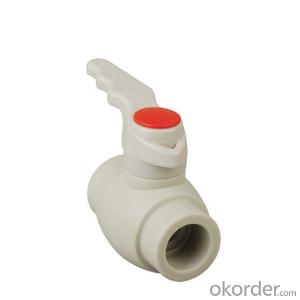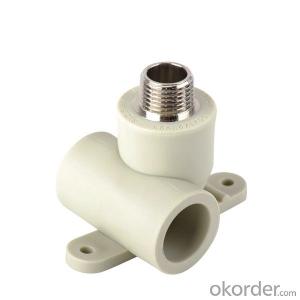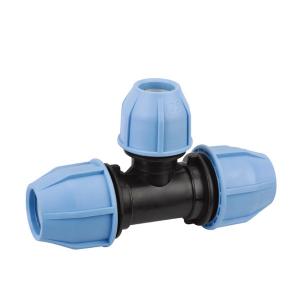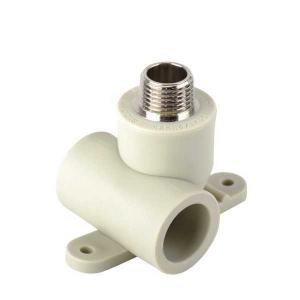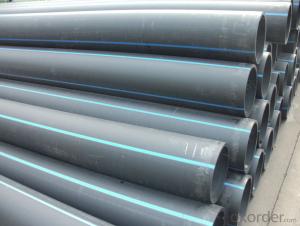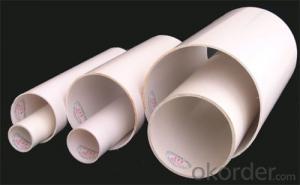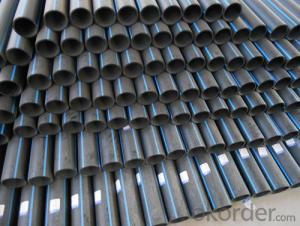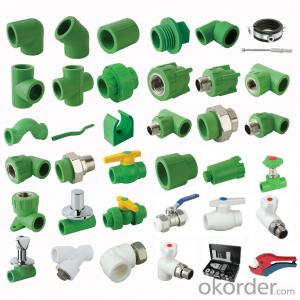High Quality Reducing Tee with Push Fit Connectors Plastic Pipe
- Loading Port:
- Ningbo
- Payment Terms:
- TT or LC
- Min Order Qty:
- 1000 watt
- Supply Capability:
- 100000 watt/month
OKorder Service Pledge
Quality Product, Order Online Tracking, Timely Delivery
OKorder Financial Service
Credit Rating, Credit Services, Credit Purchasing
You Might Also Like
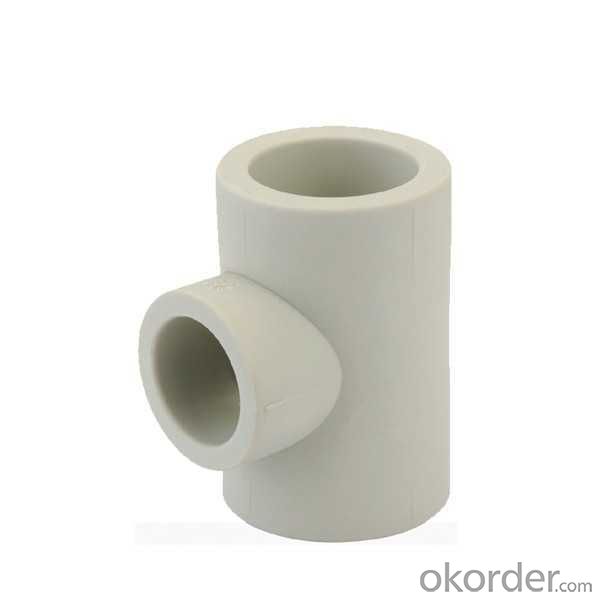 ppr fittings HYOSUNG PPR raw materials standard:DIN8077-8078 GB/T18742.3-2002 PN25 White grey green color
ppr fittings HYOSUNG PPR raw materials standard:DIN8077-8078 GB/T18742.3-2002 PN25 White grey green color
1.Material:Random Polypropylene(Hyosung R200P);
2.ISO9001&ISO14001;
3.Standard:GB/T 18742.3-2002, DIN8077/8078;
4.OEM also ok
- Q: Are plastic pipe fittings resistant to ozone?
- Yes, plastic pipe fittings are generally resistant to ozone.
- Q: What tools are needed to install plastic pipe fittings?
- The tools needed to install plastic pipe fittings typically include a pipe cutter, a deburring tool, a heat gun or torch, and a wrench or pliers for tightening the fittings.
- Q: Can plastic pipe fittings be used for rainwater collection systems?
- Yes, plastic pipe fittings can be used for rainwater collection systems. Plastic fittings are commonly used in these systems due to their durability, affordability, and resistance to corrosion.
- Q: What are the common connecting methods for plastic PP pipes?
- The common ways of connecting plastic pipes are adhesive connection, rubber ring connection, welding connection, and mechanical (clamp type pipe fitting) connection. For polypropylene (PP) pipes, there are three common ways of connection, namely, hot wire welding, butt welding and loop flange connection.
- Q: Can plastic pipe fittings be used for underground applications?
- Yes, plastic pipe fittings can be used for underground applications. Plastic pipes and fittings are commonly used in underground systems, such as drainage, sewage, and water supply, due to their durability, resistance to corrosion, and ability to withstand high pressure and environmental conditions.
- Q: How do you remove a plastic pipe fitting?
- To remove a plastic pipe fitting, you can try using a heat gun or a hairdryer to warm up the fitting, making it more pliable. Then, you can gently twist and pull the fitting while applying some force to detach it from the pipe. If this doesn't work, you can use a fitting removal tool or a pair of pliers to grip the fitting tightly and twist it counterclockwise until it loosens and can be pulled off.
- Q: Are plastic pipe fittings resistant to algae growth?
- Yes, plastic pipe fittings are generally resistant to algae growth.
- Q: Are plastic pipe fittings resistant to electrical conductivity?
- Yes, plastic pipe fittings are generally resistant to electrical conductivity.
- Q: Can plastic pipe fittings be used in geothermal heat pump systems?
- Yes, plastic pipe fittings can be used in geothermal heat pump systems. Plastic fittings are commonly used in these systems due to their durability, corrosion resistance, and ease of installation. They are compatible with the high temperatures and pressures typically found in geothermal heat pump systems, making them a suitable choice for this application.
- Q: How do plastic pipe fittings compare to copper fittings?
- Plastic pipe fittings are generally more cost-effective and easier to install compared to copper fittings. They are lightweight, resistant to corrosion, and have a longer lifespan. However, copper fittings tend to provide better durability and are more suitable for high-pressure applications. Ultimately, the choice between plastic and copper fittings depends on the specific needs and requirements of the plumbing system.
Send your message to us
High Quality Reducing Tee with Push Fit Connectors Plastic Pipe
- Loading Port:
- Ningbo
- Payment Terms:
- TT or LC
- Min Order Qty:
- 1000 watt
- Supply Capability:
- 100000 watt/month
OKorder Service Pledge
Quality Product, Order Online Tracking, Timely Delivery
OKorder Financial Service
Credit Rating, Credit Services, Credit Purchasing
Similar products
Hot products
Hot Searches
Related keywords
